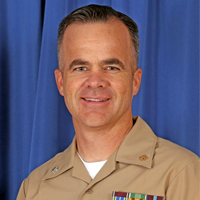During Alcohol Awareness Month, we recognize the many challenges facing Native adolescents. Although there are challenges, there are also amazing stories of resilience and courage that occur every day through the efforts of federal, tribal and urban Indian programs aimed at alcohol prevention and treatment.
One of our most powerful treatment options is the Youth Regional Treatment Centers, which are available to 12-18 year-old adolescents who struggle with alcohol use and other substance use addiction. The Indian Health Service currently provides funding to 12 federally and tribally operated YRTCs located throughout the nation that provide a range of clinical services rooted in a culturally relevant, holistic model of care. These services include: clinical evaluation; substance abuse education; group, individual, and family psychotherapy; art therapy; adventure-based counseling; life skills; medication management or monitoring; evidence-based/practice-based treatment; aftercare relapse prevention; and post-treatment follow-up services.
I recently spoke to a graduate of a 120-day treatment program at one of the treatment centers. He shared his life changing and lifesaving effects of treatment from his experience.
He said he came to treatment because he was involved in gangs and began using alcohol and drugs. While he was using, he hurt someone and faced a long stay in juvenile detention. As an alternative option to detention, he was placed in treatment.
“I have really changed. I have learned new skills and I have been using these skills to learn how to cope in the moment instead of just reacting. Treatment has taught me a lot about what it means to be Native. I have learned the meaning of drumming, beading, and sweat lodge ceremonies. When I go home, I want to keep learning about my tribal ceremonies and traditions.”
He now has goals to graduate high school and enroll in Job Corps.
“I am done with using alcohol and drugs because they get me nowhere and my using hurts the people I love. Treatment has helped me learn how to put it all aside and become a better person.”
American Indian and Alaska Native adolescents are far more likely to start using alcohol at earlier ages when compared to their peers and can struggle with alcohol addiction. Behavioral and mental health disparities often attributed to poverty, generational trauma, adverse childhood events, colonization, and incarceration are factors that contribute to these disparities.
Through services focused on education, culture-based prevention and treatment initiatives, family strengthening, and recreational activities, youth can overcome their challenges. Furthermore, YRTCs support recovering of their lives to become healthy, strong, and resilient. As part of the responsibility of the federal government to provide health care to American Indians and Alaska Natives, adolescents who are struggling with addiction are able to receive services at these YRTCs at no cost. For more information on the federal and tribal YRTCs, please visit www.ihs.gov/yrtc/.
Related content:
Youth Regional Treatment Centers



